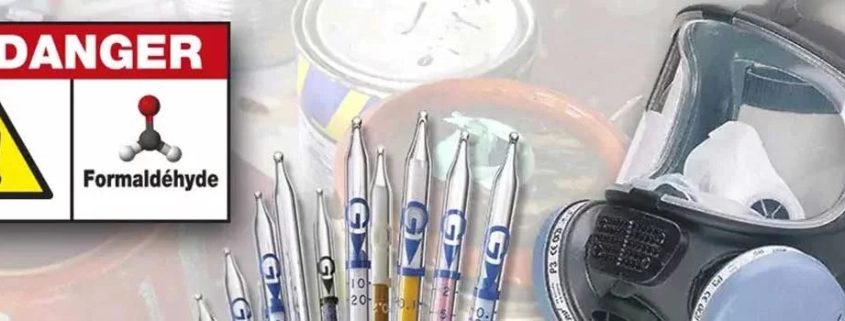Formaldehyde is a Highly Toxic VOC
What is a volatile organic compound?
Volatile organic compounds, better known as VOCs, thousands of items (such as hydrocarbons, solvents, preservatives, alcohols…) and biogenic , that is, natural or anthropogenic It may be (man-made). Due to their incredible numbers, volatile organic compounds (VOCs) can be found in almost every field of activity (medical, food industry, refineries…) and even in the home (paints, varnishes, cosmetics…). Because they are volatile, they spread around the emission source and are dangerous. Although some VOCs have a low impact on health (visual and odor nuisance), others are highly toxic and even carcinogenic.
The same happens when dissolved in water formalin or formic aldehyde This also applies to formaldehyde, also known as formaldehyde.
This volatile organic compound belongs to the aldehyde family, formed as a result of the chemical transformation of an alcohol or incomplete combustion of fuel or wood. This article It is very harmful to humans and many in the field of activity (industry, agriculture, photography), in houses (foam pressed boards used for insulation, concrete, plaster, woodworking…) and even in tobacco smoke can be found .
Dangers of formaldehyde exposure:
For brief introduction:
At ambient temperature, formaldehyde (or methanal) is extremely flammable and depending on its properties, it may form explosive mixtures in air. Brief exposure (more than 0.1 ppm for 15 minutes) may cause skin irritation, especially eczema, burning sensation in the eyes, and breathing difficulties. loss of sensation causes . Even at low doses, formaldehyde causes severe ulceration of the digestive tract, although cases of ingestion are rare.
For long-term exposure:
Long-term exposure to formaldehyde leads to rapid deterioration of respiratory capacities: nasal lesions, cough, asthma, pulmonary system failure. The World Health Organization's International Agency for Research on Cancer (IARC) recommends formaldehyde category 1 carcinogenic substance classified as , which means that its carcinogenic effects in humans have been proven. Indeed, results of epidemiological studies reveal a clear causal relationship between formaldehyde exposure and nasopharyngeal cancers. However, the results do not guarantee a definitive link between this volatile organic compound and leukemia.
How to protect against formaldehyde:
Before protecting against formaldehyde, it must be detected. The simplest and most economical solution is to use colorimetric reagent tubes such as Dräger tubes with gas point measurement. Reagent tubes (with pumps, such as Gastec tubes) provide instantaneous measurement of gas concentration, while dosimetric tubes measure average exposure to the gas. A VOC detector would be useful for more in-depth study and functionality.
The simplest and most cost-effective solution is the gas detector tube system. Actually colorimetric gas detection tubes ( Gastec reagent tubes (such as pumped ones) allow instantaneous measurement of a time-weighted average of exposure to this gas. A volatile organic compound detector will be useful for precise monitoring and more complete functions.
Once detected, air-purifying respiratory protective equipment makes it possible to protect against it. With type B filter cartridge half masks or full face gas masks It offers the best protection against this volatile organic compound. A full respirator that protects the eyes should be preferred to prevent any eye irritation.



